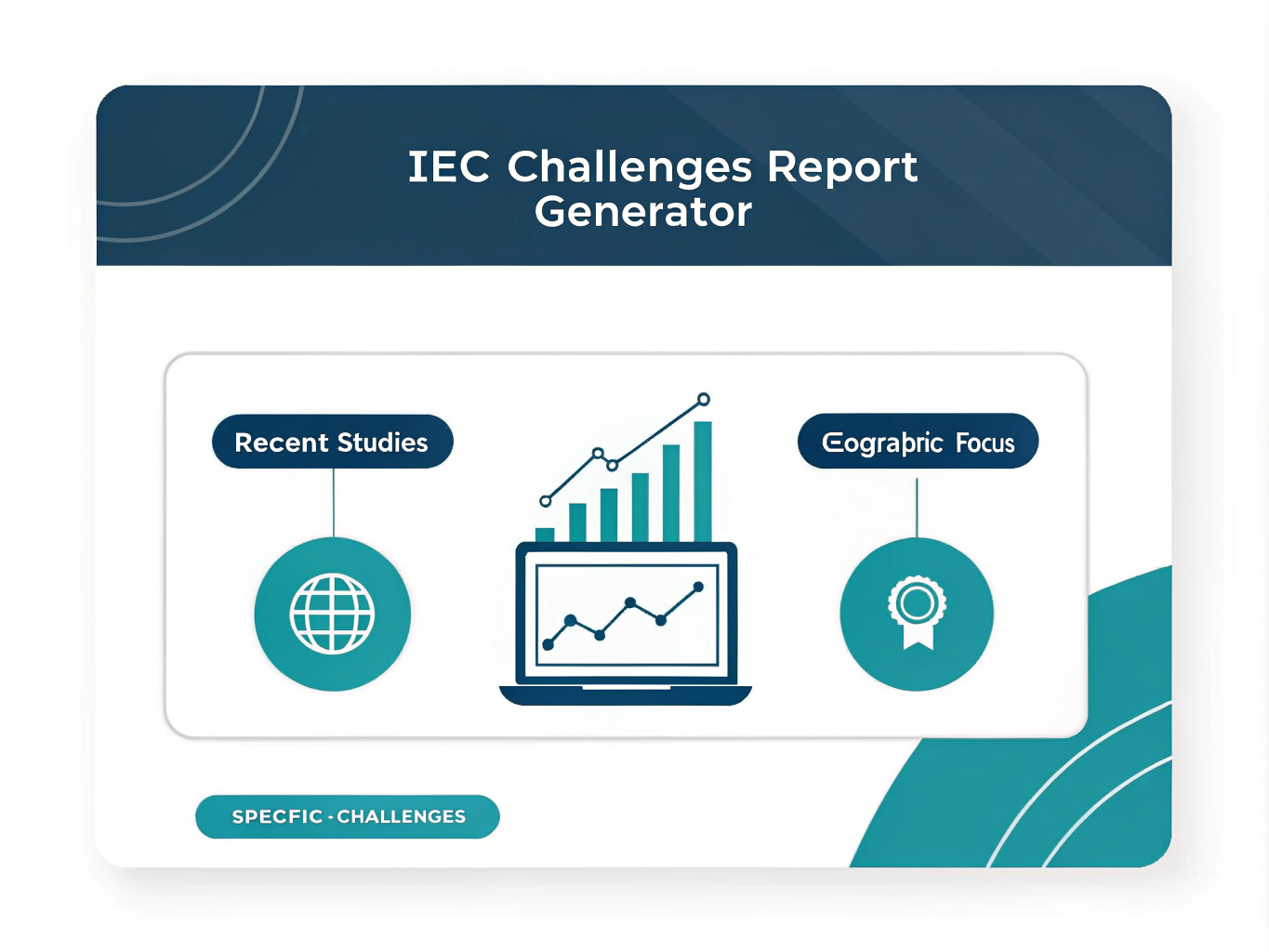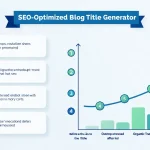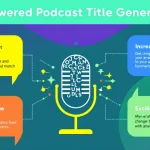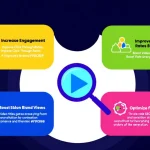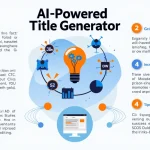IEC Challenges Report Generator
Is this tool helpful?
How to Use the IEC Challenges Report Generator Effectively
The IEC Challenges Report Generator is a powerful tool designed to provide Independent Educational Consultants (IECs) with valuable insights into the biggest challenges faced by their profession. To use this tool effectively, follow these step-by-step instructions:
Step 1: Input Recent Studies or Reports (Optional)
In the first field labeled “Any specific recent studies or reports (within the last 5 years) to focus on,” you can enter the title or author of any particular studies you’d like the report to include. This helps tailor the generated content to your specific interests or research needs.
Sample inputs:
- “2023 IECA Member Survey on Industry Trends”
- “Smith & Johnson’s 2022 Analysis of IEC Market Dynamics”
Step 2: Specify Geographic Focus (Optional)
The second field allows you to input a specific geographic area if you want the report to focus on challenges in a particular region. This is especially useful if you’re interested in understanding how IEC challenges may vary across different locations.
Sample inputs:
- “North America”
- “Asia-Pacific Region”
Step 3: Prioritize Specific Challenges (Optional)
In the third field, you can list any particular challenges you’re interested in exploring. This helps the tool prioritize certain aspects of the IEC profession in the generated report.
Sample inputs:
- “Digital marketing, regulatory compliance, remote counseling”
- “College admissions landscape changes, pricing strategies, professional development”
Step 4: Generate the Report
Once you’ve filled in the desired fields (or left them blank for a more general report), click the “Generate IEC Challenges Report” button. The tool will process your inputs and create a comprehensive report based on the most up-to-date information available.
Step 5: Review and Utilize the Results
After the report is generated, it will appear in the results section below the form. Take time to carefully read through the findings, which will include detailed information on IEC challenges, relevant statistics, and insights from recent studies. You can use this information to inform your business strategies, professional development plans, or further research.
Step 6: Copy and Save the Report
If you want to save or share the generated report, simply click the “Copy to Clipboard” button. This allows you to paste the content into a document or email for future reference or distribution to colleagues.
Understanding the IEC Challenges Report Generator: Purpose and Benefits
The IEC Challenges Report Generator is an innovative tool designed to provide Independent Educational Consultants with a comprehensive overview of the most pressing challenges facing their profession. By leveraging the power of AI and data analysis, this tool offers IECs a unique opportunity to gain valuable insights into their industry landscape, helping them navigate the complex world of educational consulting more effectively.
Purpose of the Tool
The primary purpose of this tool is to aggregate, analyze, and synthesize information from various sources to provide IECs with a clear picture of the challenges they face. By doing so, it aims to:
- Identify trends and patterns in the IEC industry
- Highlight key areas of concern for professionals in the field
- Provide data-driven insights to inform decision-making
- Offer a comprehensive view of the IEC landscape, both globally and in specific regions
- Support professional development and strategic planning for IECs
Key Benefits for IECs
Utilizing the IEC Challenges Report Generator offers numerous benefits for professionals in the field:
- Time-saving research: Instead of spending hours scouring multiple sources for information, IECs can quickly generate a comprehensive report tailored to their specific interests.
- Up-to-date insights: The tool draws from the most recent studies and reports, ensuring that IECs have access to the latest information and trends in their field.
- Customizable focus: By allowing users to specify geographic areas or particular challenges, the tool provides highly relevant information that caters to individual needs and interests.
- Data-driven decision making: Armed with statistics and key findings from reputable sources, IECs can make more informed decisions about their practice and professional development.
- Competitive advantage: Understanding the broader landscape of challenges faced by IECs can help consultants position themselves more effectively in the market and address client needs proactively.
- Professional development guidance: By highlighting key challenges, the tool can help IECs identify areas where they may need to enhance their skills or knowledge.
- Strategic planning support: The insights provided can inform long-term planning and help IECs anticipate and prepare for future industry challenges.
- Networking and collaboration opportunities: Armed with comprehensive knowledge of industry challenges, IECs can engage in more meaningful discussions with colleagues and potentially identify areas for collaboration.
How the IEC Challenges Report Generator Addresses User Needs
The IEC Challenges Report Generator is specifically designed to address the unique needs of Independent Educational Consultants by providing them with a powerful tool to understand and navigate the complex landscape of their profession. Here’s how the tool addresses specific user needs and solves common problems faced by IECs:
1. Information Overload Solution
In today’s fast-paced digital world, IECs are often overwhelmed by the sheer volume of information available. The challenge lies in filtering through this vast sea of data to find relevant, actionable insights. The IEC Challenges Report Generator addresses this need by:
- Aggregating information from multiple reputable sources
- Synthesizing data into a coherent, easy-to-understand format
- Highlighting the most pertinent challenges and trends
- Saving IECs countless hours of research and analysis
2. Customized Insights for Diverse Needs
IECs often have diverse specializations and operate in various geographic regions, each with its unique set of challenges. The tool addresses this need for customization by:
- Allowing users to specify geographic focus areas
- Enabling prioritization of specific challenges
- Incorporating user-specified recent studies or reports
This level of customization ensures that the generated report is highly relevant to each user’s specific context and interests.
3. Data-Driven Decision Support
In an increasingly competitive landscape, IECs need to base their strategic decisions on solid data and insights. The IEC Challenges Report Generator supports this need by:
- Providing key statistics related to identified challenges
- Referencing findings from recent, reputable studies
- Offering a comprehensive overview of the current IEC landscape
This data-rich approach empowers IECs to make informed decisions about their practice, services, and professional development.
4. Trend Identification and Proactive Planning
To stay ahead in the field, IECs need to anticipate future challenges and trends. The tool addresses this need by:
- Analyzing recent studies to identify emerging trends
- Highlighting evolving challenges in the IEC profession
- Providing insights that can inform long-term strategic planning
By offering a forward-looking perspective, the tool helps IECs prepare for and adapt to the changing landscape of educational consulting.
5. Professional Development Guidance
Continuous learning and skill enhancement are crucial for IECs. The IEC Challenges Report Generator supports professional development by:
- Identifying key areas where IECs may need to upskill
- Highlighting emerging challenges that may require new expertise
- Providing a foundation for targeted professional development plans
This guidance helps IECs focus their learning efforts on the most critical areas for future success.
6. Competitive Advantage Through Knowledge
In a field where expertise and insight are key differentiators, the tool provides IECs with a competitive edge by:
- Offering comprehensive, up-to-date knowledge of industry challenges
- Enabling IECs to demonstrate thought leadership to clients
- Providing insights that can inform service offerings and marketing strategies
This knowledge empowers IECs to position themselves as informed, forward-thinking professionals in their field.
Practical Applications and Use Cases
The IEC Challenges Report Generator offers a wide range of practical applications for Independent Educational Consultants. Here are some specific use cases that illustrate how IECs can leverage this tool in their professional practice:
1. Strategic Business Planning
Scenario: An IEC is preparing to develop a five-year strategic plan for their consultancy.
Application: By using the tool to generate a comprehensive report on industry challenges, the IEC can:
- Identify key trends that may impact their business in the coming years
- Anticipate potential obstacles and plan mitigation strategies
- Align their service offerings with emerging needs in the market
- Develop a SWOT analysis based on the challenges identified
Outcome: The IEC creates a robust strategic plan that addresses current and future industry challenges, positioning their consultancy for long-term success.
2. Professional Development Planning
Scenario: An IEC is planning their professional development activities for the upcoming year.
Application: Using the tool to focus on specific challenges related to skills and knowledge, the IEC can:
- Identify areas where they need to enhance their expertise
- Prioritize training and development opportunities based on emerging challenges
- Allocate their professional development budget more effectively
Outcome: The IEC creates a targeted professional development plan that addresses critical skill gaps and prepares them for future industry demands.
3. Marketing and Client Communication
Scenario: An IEC is preparing marketing materials and client presentations.
Application: By generating a report on current IEC challenges, the consultant can:
- Craft messaging that demonstrates their understanding of industry issues
- Create content (e.g., blog posts, social media updates) that addresses top concerns in the field
- Develop presentations that showcase their expertise in navigating complex challenges
Outcome: The IEC’s marketing materials and client communications are more relevant and impactful, helping to attract and retain clients.
4. Service Offering Refinement
Scenario: An IEC is considering expanding or adjusting their service offerings.
Application: Using the tool to analyze challenges in specific geographic areas or niche markets, the IEC can:
- Identify underserved areas or emerging needs in the market
- Develop new services that address specific challenges faced by clients
- Refine existing services to better meet evolving client needs
Outcome: The IEC launches new or refined services that are closely aligned with market needs, potentially increasing their client base and revenue.
5. Networking and Collaboration
Scenario: An IEC is preparing to attend a professional conference or networking event.
Application: By generating a report on current industry challenges, the IEC can:
- Prepare talking points for meaningful discussions with colleagues
- Identify potential collaboration opportunities based on shared challenges
- Contribute informed perspectives to panel discussions or workshops
Outcome: The IEC engages in more productive networking, potentially forming valuable professional relationships and collaborations.
6. Client Education and Expectation Management
Scenario: An IEC is onboarding a new client and wants to set realistic expectations.
Application: Using the tool to generate insights on current challenges in college admissions, the IEC can:
- Educate clients about the complexities of the current admissions landscape
- Explain how certain challenges might impact the client’s specific situation
- Demonstrate the value of their services in navigating these challenges
Outcome: The client has a better understanding of the process and the IEC’s role, leading to a stronger, more transparent working relationship.
Frequently Asked Questions (FAQ)
Q1: How often is the information in the IEC Challenges Report Generator updated?
A1: The tool is designed to incorporate the most recent studies and reports available, typically focusing on information from the past five years. However, the exact update frequency may vary based on the availability of new, relevant research in the field of independent educational consulting.
Q2: Can I use the generated report for my own research or publications?
A2: Yes, you can use the insights from the generated report for your own research or publications. However, it’s important to properly cite the original sources referenced in the report. The tool provides a synthesis of information from various sources, so it’s best practice to refer back to those original studies for direct quotations or specific data points.
Q3: How does the tool handle conflicting information from different sources?
A3: The IEC Challenges Report Generator aims to provide a balanced view of the challenges faced by IECs. When conflicting information is present in different sources, the tool typically presents both perspectives, allowing users to understand the range of views on a particular issue. In cases where there is a clear consensus among multiple reputable sources, this consensus view may be emphasized.
Q4: Can I save multiple reports for comparison?
A4: While the tool itself doesn’t have a built-in save feature, you can easily copy the generated report to your clipboard and save it in a document on your computer. This allows you to generate multiple reports with different parameters and save them for comparison or future reference.
Q5: Is the tool suitable for IECs who are just starting their career?
A5: Absolutely! The IEC Challenges Report Generator can be particularly valuable for new IECs. It provides a comprehensive overview of the current landscape and challenges in the field, which can help newcomers quickly get up to speed on important issues. It’s an excellent tool for understanding the industry and identifying areas where you may want to focus your learning and development.
Q6: How does the geographic focus option work?
A6: When you specify a geographic area in the tool, it prioritizes information and challenges that are particularly relevant to that region. This could include local regulatory issues, market-specific trends, or challenges unique to the educational systems in that area. However, it’s important to note that the tool will still provide general insights applicable to IECs globally, in addition to the region-specific information.
Q7: Can I use this tool to compare challenges across different regions?
A7: Yes, you can use the tool to compare challenges across different regions. Simply generate separate reports for each geographic area you’re interested in, and then compare the results. This can be particularly useful for IECs who work with international students or are considering expanding their services to new regions.
Q8: How detailed are the statistics provided in the report?
A8: The level of detail in the statistics depends on the available data from recent studies and reports. The tool aims to provide key figures and percentages that illustrate the magnitude of various challenges. However, for in-depth statistical analysis, it’s recommended to refer to the original research studies cited in the report.
Q9: Can I request the tool to focus on a specific type of educational consulting (e.g., graduate school admissions, special needs)?
A9: While the tool doesn’t have a specific field for this, you can use the “Specific challenges to prioritize” field to focus on areas relevant to particular types of educational consulting. For example, you could input “graduate school admissions challenges” or “special needs education consulting issues” to tailor the report to your specific area of practice.
Q10: How can I stay updated on new features or improvements to the IEC Challenges Report Generator?
A10: The best way to stay informed about updates to the tool is to regularly check the website where the tool is hosted. You may also want to subscribe to newsletters or follow social media accounts associated with the tool or its creators for announcements about new features or improvements.
Important Disclaimer
The calculations, results, and content provided by our tools are not guaranteed to be accurate, complete, or reliable. Users are responsible for verifying and interpreting the results. Our content and tools may contain errors, biases, or inconsistencies. We reserve the right to save inputs and outputs from our tools for the purposes of error debugging, bias identification, and performance improvement. External companies providing AI models used in our tools may also save and process data in accordance with their own policies. By using our tools, you consent to this data collection and processing. We reserve the right to limit the usage of our tools based on current usability factors. By using our tools, you acknowledge that you have read, understood, and agreed to this disclaimer. You accept the inherent risks and limitations associated with the use of our tools and services.
